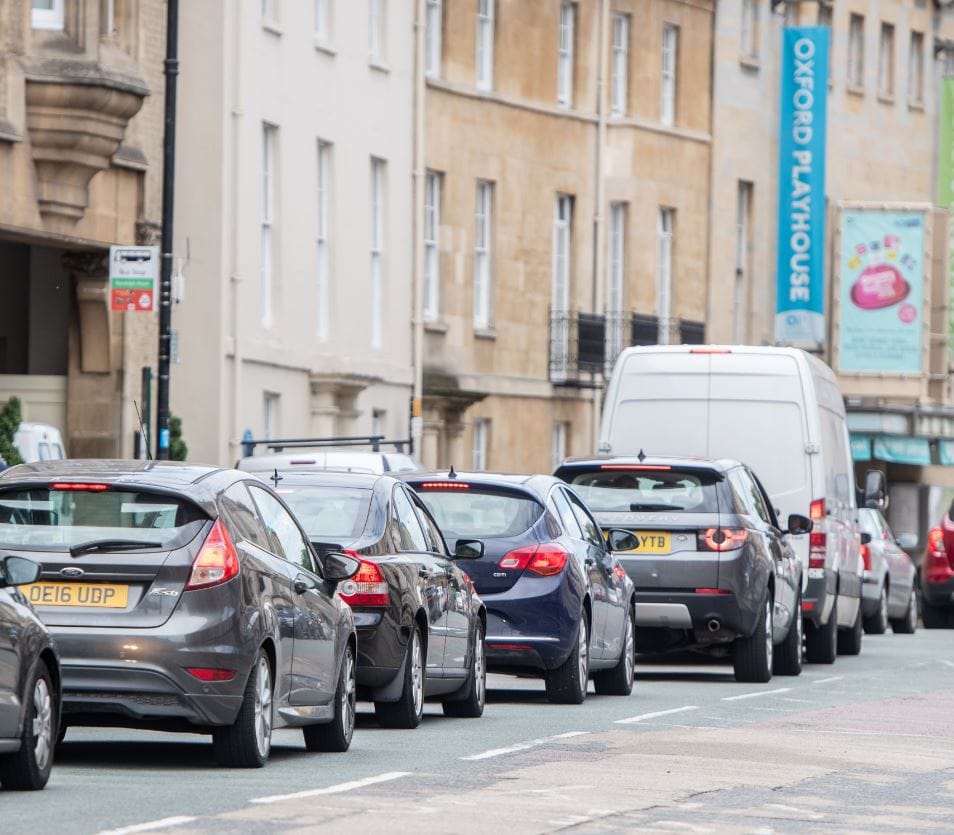Annual air pollution report shows pollution in Oxford down in 2023

According to Oxford City Council's annual air pollution report for January – December 2023:
- 📉 Air pollution levels in Oxford decreased by 14% on average compared with 2022 levels, against a 9% average reduction across the UK. NO2 levels across Oxford are now (on average) 33% below 2019 levels, and down by 18% since the Council launched its latest Air Quality Action Plan (AQAP) in 2021.
- ✔️ 126 out of 128 sites were compliant with the UK’s legal target for air pollution (40 µg/m3) - the first time outside of the coronavirus pandemic, which saw a 59% decrease in air pollution levels.
- ⚠️ Only two sites were found to be in breach of the UK’s legal target:
- Headington Hill measured a concentration of 53 µg/m3. (While still 32% (13 µg/m3) over the legal target, this is a 24% reduction compared to NO2 levels in 2022 (70 µg/m3).)
- Southern Bypass (south of Botley Interchange) measured a concentration of 42 µg/m3.
- ☁️ Nine sites were higher than Oxford’s own local annual mean target for NO2 (30 µg/m3), including St Clements (38 µg/m3 and 34 µg/m3) and Headington Hill (53 µg/m3), although for comparison, 18 locations were in breach of this target in 2022.
Nitrogen dioxide (NO2) is still the pollutant of most concern in Oxford and the transport sector continues to be by far the largest contributor (68%) to total emissions of Nitrogen Oxides (NO+ NO2) in the city.
Regarding the impact of the new low traffic neighbourhoods in Cowley and East Oxford specifically, the figures show that:
- All the monitoring locations both inside and on the boundary roads of the LTNS showed a decrease in NO2 levels measured in 2023, compared to 2022.
- None of the NO2 levels measured both inside and on the boundary roads of the LTNS were above the UK legal limit.
- On the boundary roads, only three monitoring locations saw NO2 levels above the city’s own NO2 target: St Clement’s (38 µg/m3 and 34 µg/m3) and Holloway Road (31 µg/m3).
Oxford City Council applies two annual mean targets for Nitrogen dioxide (NO2) air pollution:
- National legal limit: the annual mean concentration of NO2 must not exceed 40 µg/m3.
- Oxford’s own voluntary local annual mean target for NO2 of 30 µg/m3.
The World Health Organisation (WHO) estimates that around 7 million deaths each year are linked to air pollution – competing with other major global health risks such as unhealthy diet and tobacco smoking. In 2021, the WHO published new guidelines which recommended stricter limits on the ‘safe’ level of air pollution, including PM2.5 and NO2, advising that there is no level at which pollutants stop causing damage.
It's concerning that Headington Hill has the highest level of pollution in Oxford. The report describes Headington Hill as being in an "area with limited public exposure to air pollution (busy roads away from residential areas or areas with pedestrians)". However, there are hundreds of residents living in the nearby Cheney Student Village and Granville Court, many pedestrians and cyclists walking and cycling on Headington Hill and many people using Headington Hill Park, South Park and Brookes Sports Centre to exercise, play and socialise. Hopefully the new electric buses will continue to help reduce pollution levels here, but the delay to the traffic filters is bad news - the planned filter on St Clement's Street was meant to significantly reduce the amount of private car traffic using Headington Road and St Clements.
See the Council's press release and the full 2024 report for further detail.

